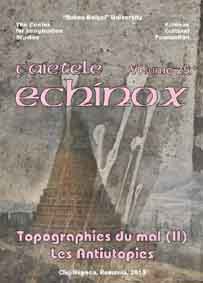Horace Newte’s Master Beast: Space, Time and the Consequences of Trespassing against Nature
Horace Newte’s Master Beast: Space, Time and the Consequences of Trespassing against Nature
Author(s): Niculae Liviu GheranSubject(s): Literary Texts
Published by: Universitatea Babeş-Bolyai
Keywords: Dystopia; Horace Newte; Master Beast; Nature; Darwin; Communism; Symbolic geography.
Summary/Abstract: The following article attempts to discuss the work of the British Edwardian writer Horace, W.C Newte, The Master Beast: Being a True Account of the Ruthless Tyranny Inflicted on the British People by Socialism, AD, 1888–2020. Newte’s central aim in the novel seems to be that of showing that as long as a social system that does not go along the laws of a Darwinian nature in which ‘survival of the fittest’ is the central axiom governing, it cannot succeed as a viable alternative and will end in tyranny. The article comments on the way in which the author constructs his dystopian city as a topos disconnected from the laws of nature, and the ways nature makes itself felt despite ideological repression in violent outbursts that threaten to destabilize the system. A spatial analysis is also conducted in order to underline the symbolical connections between different types of geography that are marginal, overlap or are situated in the past of the narrative. The author seems to use these alternative spaces as symbolic points of reference in contrast to the dystopian city.
Journal: Caietele Echinox
- Issue Year: 2013
- Issue No: 25
- Page Range: 94-101
- Page Count: 8
- Language: English
- Content File-PDF

